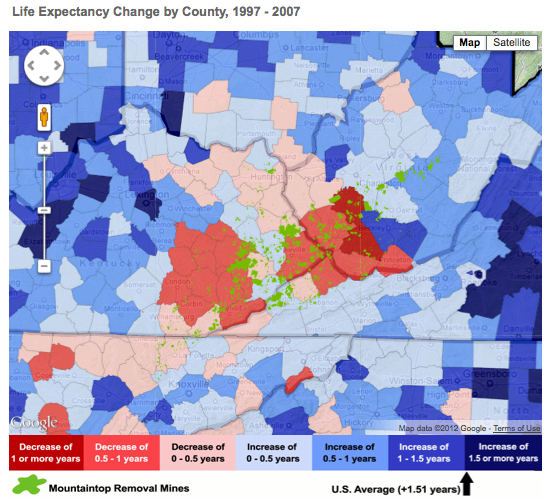Mapping the health toll of mountaintop removal

Environmental advocates have launched a new mapping tool that shows the health damage done to Appalachian communities by mountaintop removal coal mining.
Appalachian Voices launched "The Human Cost of Coal" on its iLoveMountains.org website this week in conjunction with the annual I Love Mountains Day in Frankfort, Ky. The tool maps data from the 2010 U.S. Census, the Gallup-Healthways Well-Being Index and and Institute for Health Metrics and Evaluation to show how rates of serious health problems including cancer and birth defects are significantly higher in communities with mountaintop removal mine sites.
"It is important to realize that birth defects for babies born in [areas impacted by] mountaintop removal are over twice as high than if the mother smokes during pregnancy, and over 10 times as high for circulatory/ respiratory defects," said Vernon Haltom with Coal River Mountain Watch.
Mountaintop removal mining involves the use of explosives to blast off mountain peaks and the dumping of resulting waste into nearby valleys. The practice has destroyed more than 500 mountains and has damaged more than 2,000 miles of streams in Central and Southern Appalachia.
Mountaintop removal has been linked to serious community health problems, with 21 peer-reviewed studies documenting health damages connected to the practice. For example, research has found that people living near mountaintop removal mining sites are 50 percent more likely to die of cancer and 42 percent more likely to be born with birth defects than other residents of Appalachia.
To check out The Human Cost of Coal, click here.
(Map from The Human Cost of Coal.)
Tags
Sue Sturgis
Sue is the former editorial director of Facing South and the Institute for Southern Studies.
